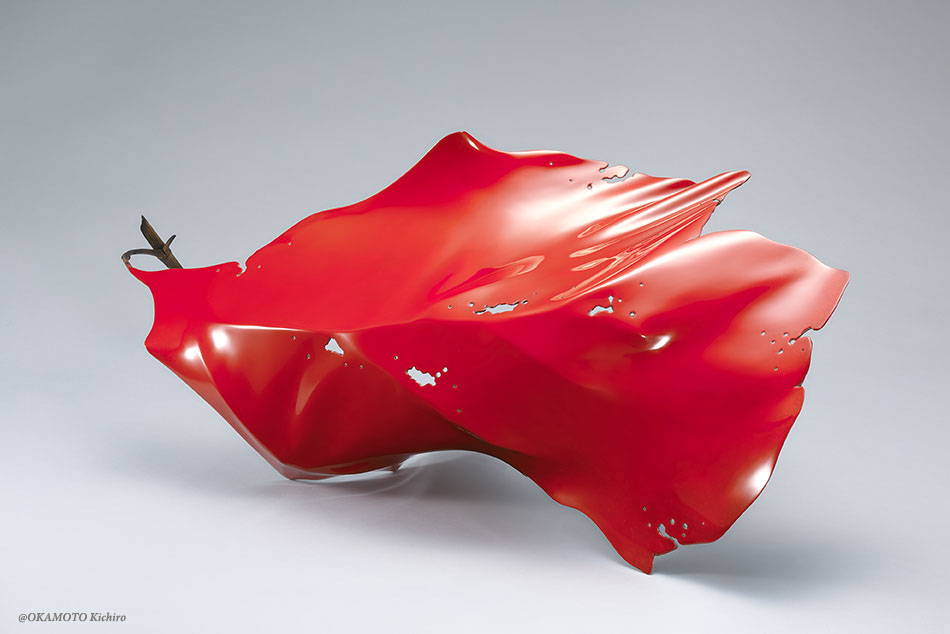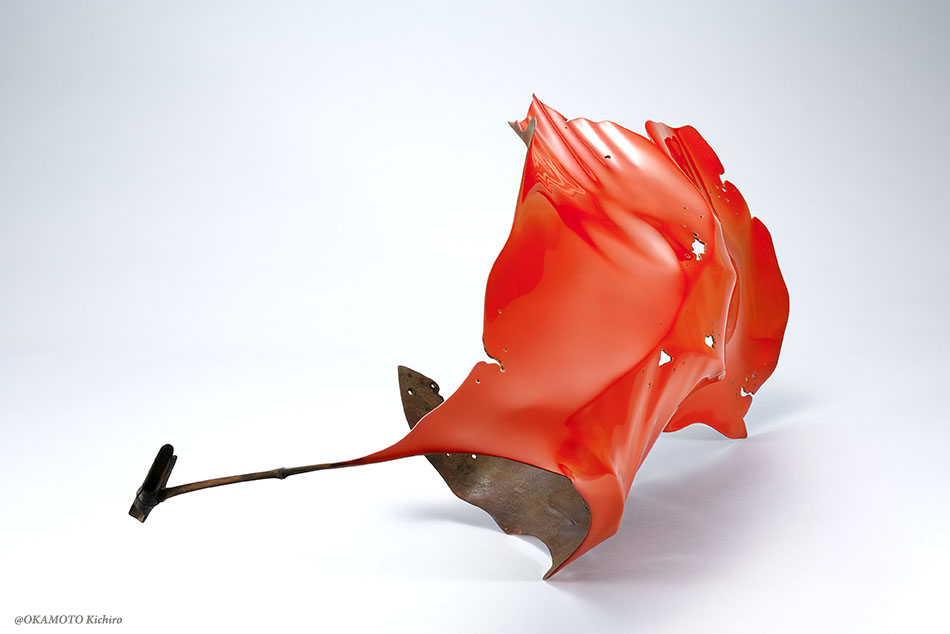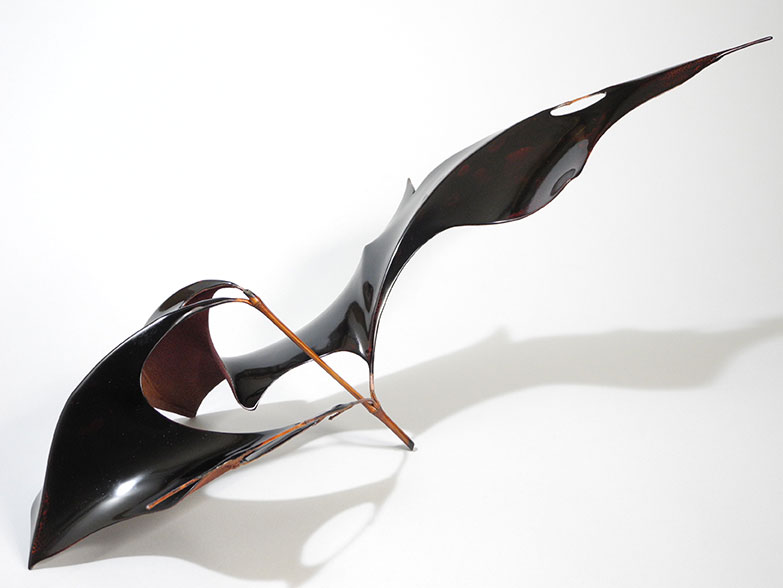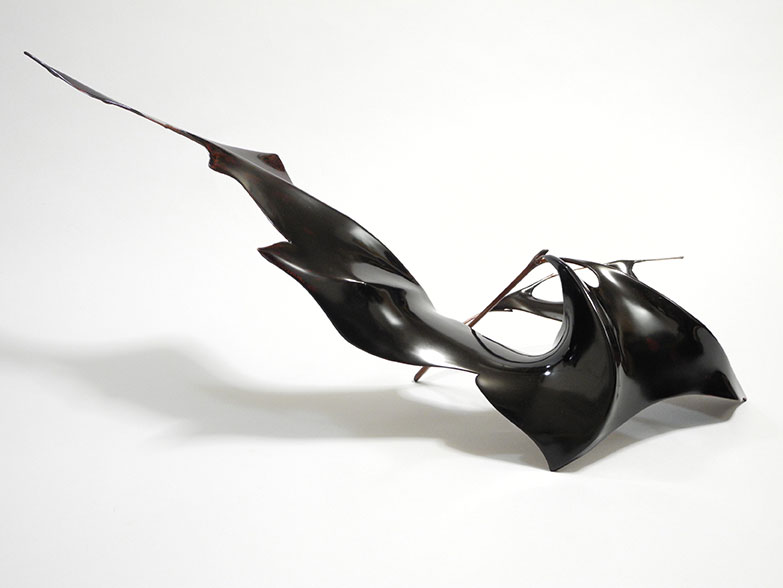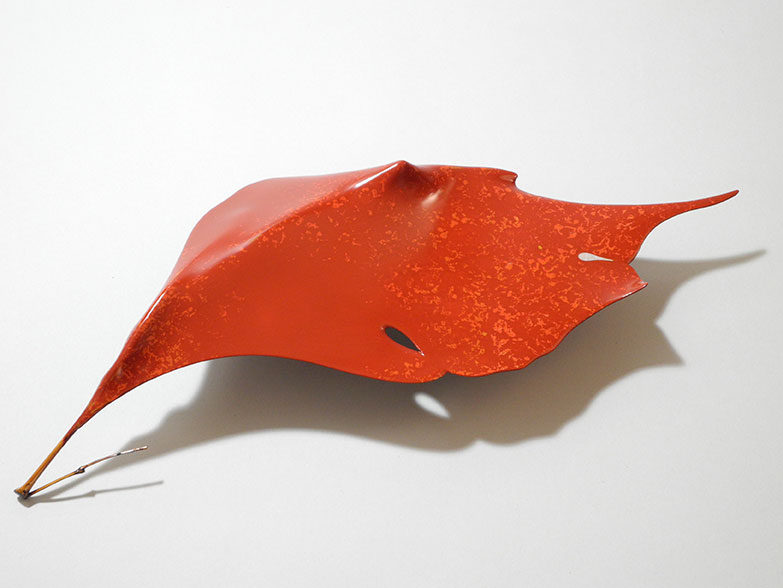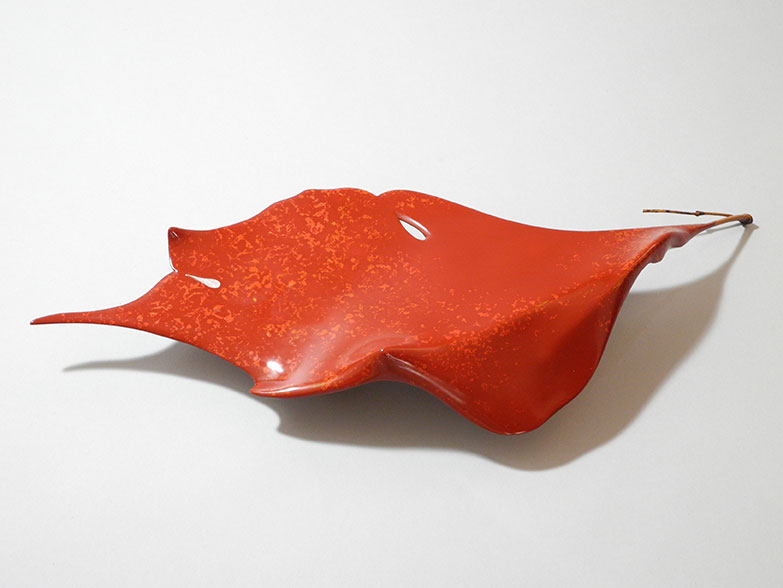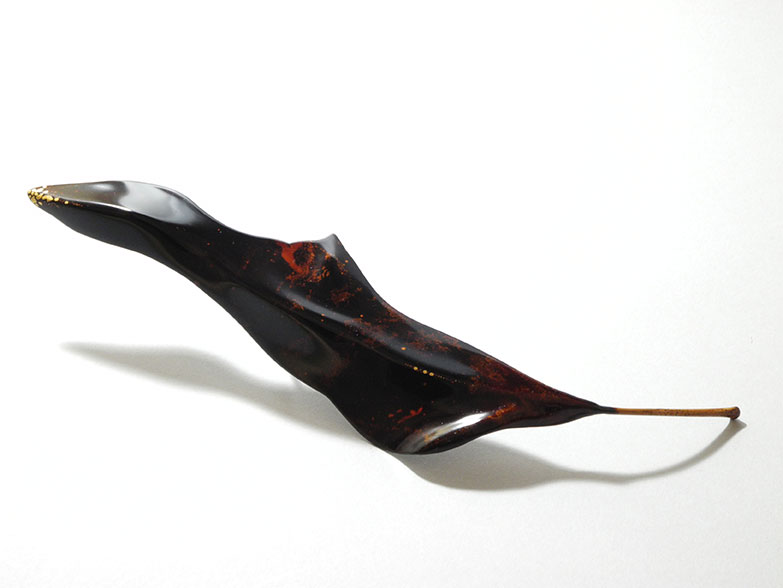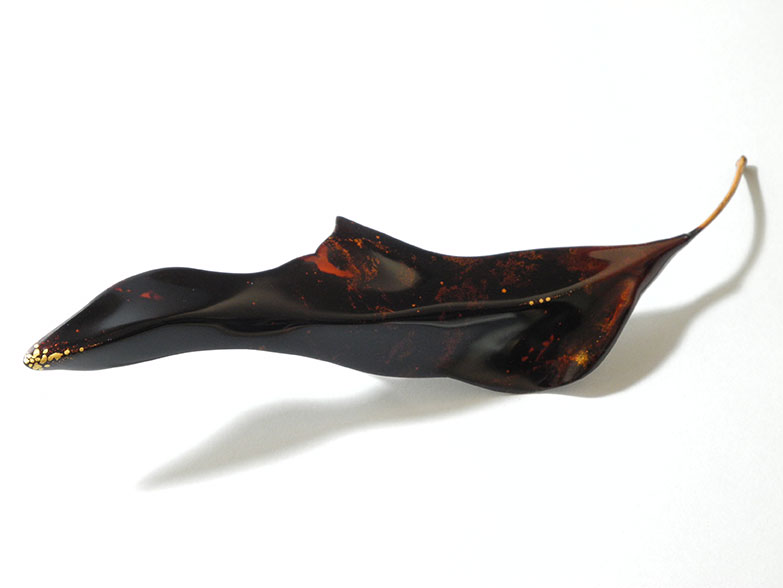Floating Forms: Lacquer Sculpture
Introduction by Keiko Fukai
To create the forms of his exquisite lacquer sculpture MURAMOTO Shingo employs two types of materials—fabric over bamboo—because both are flexible. He then applies many layers of urushi (lacquer) which hardens when it dries. The fabric becomes taut between the twigs of bamboo, evoking a sense of tension. However the multiple layers of urushi causes the fabric also to slightly sag under its own weight and this creates beautiful flowing curved lines. These overall thin, film-like surfaces produce a sense of weightlessness and distinguishes the originality of Muramoto’s work.
Muramoto was awarded a M.F.A. from Tokyo University of the Arts in 1997. After living in Tokyo for a period of time he moved to Kanazawa where he was given a teaching position at Kanazawa Utatsuyama Kogei Kobo. After leaving that position he has lived and worked as a freelance artist in Kanazawa City with his wife and three children.
Normally works of lacquer seem to be very solid, but I wanted to create forms that were light, and that might appear to be moved by the wind. In order to express this feeling I developed a technique of stretching fabric over bowed twigs in order to create the body of a form.
I am also very interested in coexistence in nature, like the relationship between insects and plants. This reminds me of the importance of each different material that I use in my work, but I am not sure that people get this feeling from my work.
The forms evolve from the relationship between the different materials. For example, the bowed twigs create movement; then the fabric stretched over them creates the curved surface; and then the lacquer coated on the surface finalizes the forms. And this is my goal– to make interesting forms through the relationships of each of three components.

